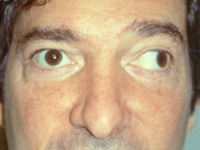Pediatric Eye Care
Comprehensive eye exams are essential in the diagnosis and treatment of vision problems, injury and disease. Early detection allows for treatment to begin before the child experiences difficulties in school due to poor vision, or before any permanent damage occurs.
Children's eye exams usually include testing for the following:
- Visual acuity
- Eye tracking
- Focusing skills
- Near vision
- Distance vision
- Amblyopia
- Strabismus
- Dyslexia
- Color blindness
- Slit-lamp examination
![7L7A6571 jessica[]eps](https://eyevision2020.net/wp-content/uploads/2025/01/7L7A6571-jessicaeps.jpg)
Treatment of a Pediatric Eye Condition
Vision or eye health problems detected during a pediatric eye examination are treated by our experienced team of physicians using safe, minimally invasive techniques taking into account the special needs of developing eyes. Treatment of pediatric vision conditions may include corrective lenses to improve focusing or corrective eye therapy exercises. More serious conditions affecting the health of the eye, such as glaucoma, cataracts or retinopathy of prematurity, may require a medical or surgical treatment approach.
Our practice and our physicians strive to provide the highest quality of care so that children are able to achieve optimal vision and eye health that does not affect their school work or other everyday activities.
To learn more about our pediatric eye case services, please call us today to schedule an appointment.
Treatment of Myopia
The doctors at Eye Physicians and Surgeons are certified to treat myopia progression in children with the use of both the MiSight contact lens and dilute atropine drops. Ask Dr. Bacal, Dr. Bowen or Dr. Fishilevich if your child is a candidate.
Adult Strabismus
Strabismus, or crossed eyes, is a misalignment of the eyes. The eyes are not lined up with each other and are unable to point at the same object together. The condition occurs in about 4% of children, and many adults suffer from it as well.
Sometimes incorrectly referred to as a lazy eye, strabismus is also known as:
- Crossed eyes
- Wandering eyes
- Wall-eyed
Types of Strabismus
Strabismus is classified according to the direction the eye is turned. The most common types of strabismus are:
- Inward turning, or esotropia
- Outward turning, or exotropia
- Upward turning, or hyperopia
- Downward turning, or hypotropia

Causes of Strabismus
Strabismus may be caused by the following:
- Congenital (present from birth)
- Eye injury
- Diabetes
- Tumor
- Retinal damage
- Farsightedness
- Stroke
- Cranial nerve palsy
- Other medical conditions
Symptoms of Strabismus
Strabismus may occur all the time or appear intermittently, usually when the person is tired, ill or concentrating on near vision objects. Symptoms of strabismus include:
- Loss of depth perception
- Double vision
- Loss of vision
Diagnosis of Strabismus
After a thorough medical examination of the eye, the doctor will test for strabismus using the Hirschberg test to examine the reflection of light in each eye. If the eye is not properly aligned, the reflection will not be seen in the same place in each eye. Other diagnostic tests that may be performed include:
- Retinal exam
- Visual acuity exam
- Cover test
Treatment of Strabismus
The goal, in the treatment of strabismus, is to preserve vision. For children, early treatment is best, preferably before the age of six. Older patients can be helped as well; it's never too late to seek treatment.
Advanced cases of strabismus are treated with a combination of therapy, including:
- Prescription eyeglasses
- Vision therapy
- Surgery
- Prism therapy
- BOTOX® injections
Strabismus may manifest at first as double vision. Without treatment, strabismus can lead to:
- Visual impairment
- Loss of binocular vision
- Blindness in the weaker eye

